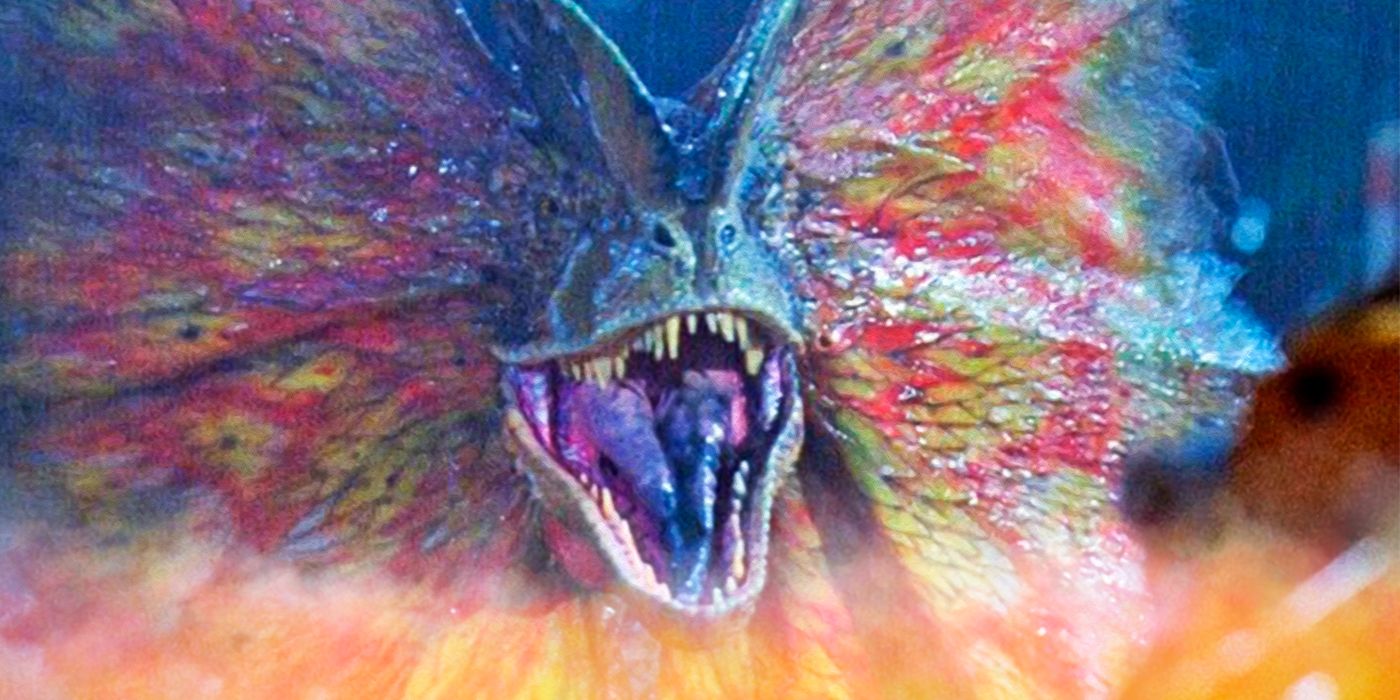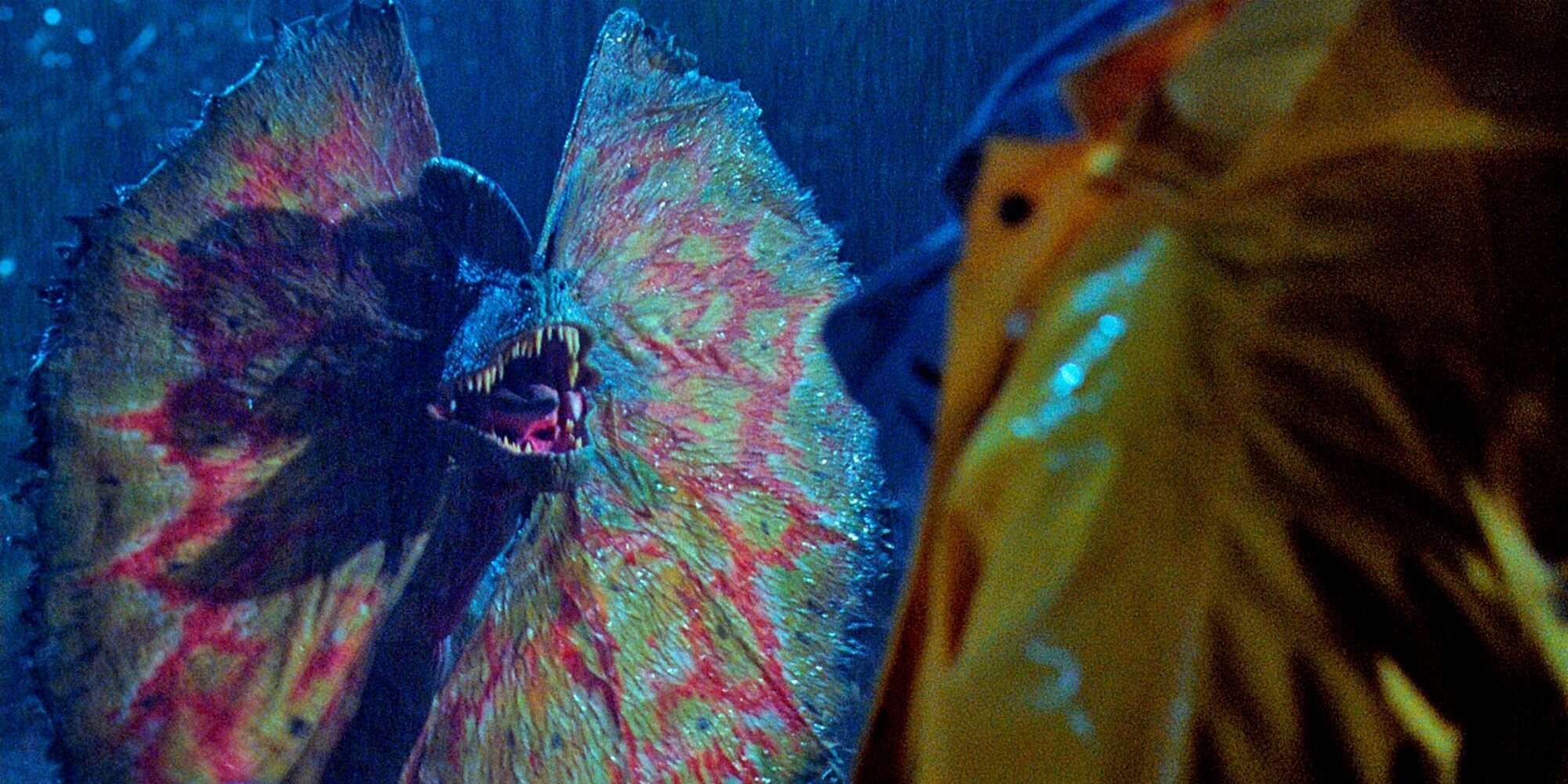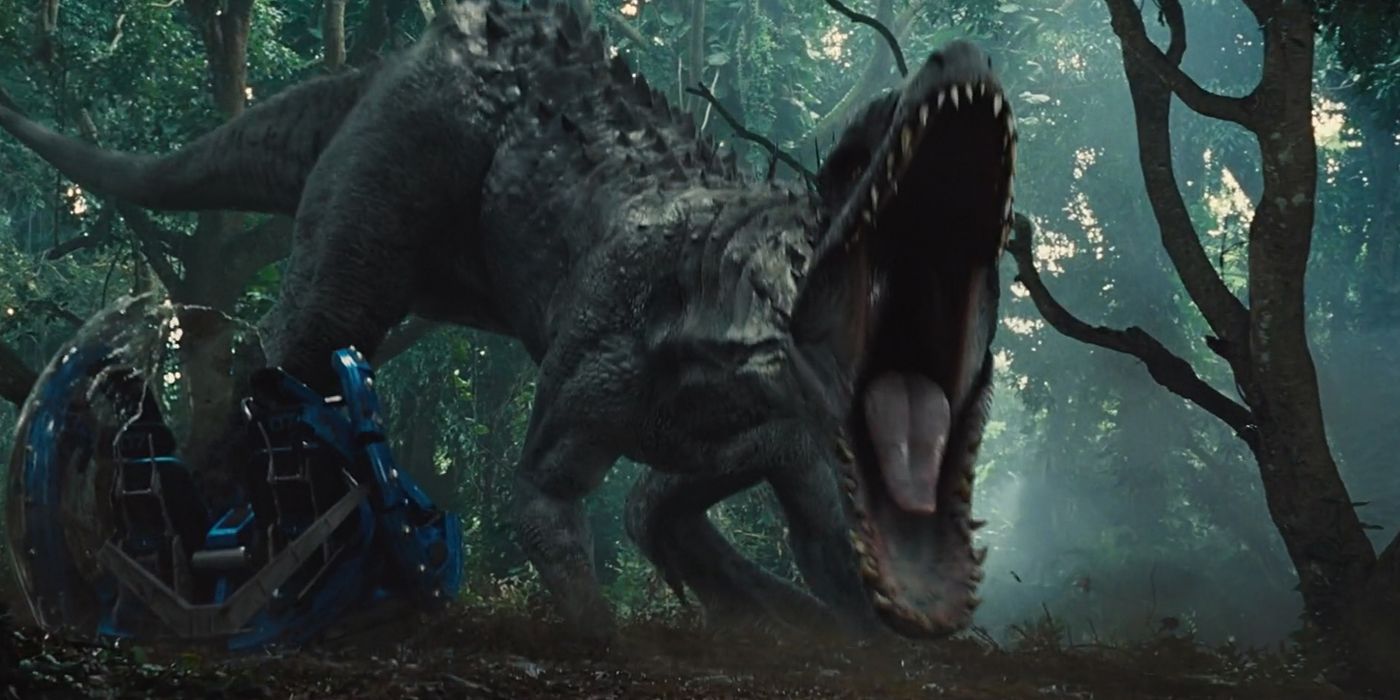The Jurassic Park franchise has shown audiences the wonder of what genetic science could bring to the world, as well as its horrors. At first, it appeared like things couldn't have gotten much worse than creating dinosaurs that had the potential to kill humans. But in Jurassic World, that got quickly proven wrong as scientists and businessmen decided that the only thing better than dinosaurs were totally original hybrid creations like the Indominus Rex. But what's even more surprising was that the first true dangerous hybrid actually appeared in the first Jurassic Park.
Technically, since dinosaurs share their DNA with tree frogs, all creations were genetic hybrids to a degree. But the Indominus Rex was the first to blend the DNA of raptors, the T-Rex, cuttlefish and many other creatures. However, Jurassic Park had introduced its own hybrid known as the Dilophosaurus. While the beast itself was alive during the age of dinosaurs, its ability to spit venom was never factual. In fact, even before the original film's release, this ability was never tied to the creature. As a result, it may have been the first genetic hybrid created by the park. But if so, that would raise many more questions.
One of the biggest questions raised would be what creatures it may have gotten blended with to create a venom-spitting dinosaur. For starters, the Dilophosaurus venom often led to blindness and paralysis. Some possible choices may have included a komodo dragon as their spit carries dangerous batteries. However, the tar-like consistency of the venom may also link with cephalopods like the octopus or squid. Interestingly, it uses spit as a projectile, similar to some snakes. Although it's not confirmed, this unique ability could at least allude to the fact that it took some unethical choices to create such a creature.
Another mystery raised would be why the geneticists never went bigger when they could clearly create hybrids. One possibility was that the larger the size of these creations, the more unstable their genetic structure would be. The Indoraptor was a great example of this, as its size and hybrid nature made it an unstable specimen that was highly aggressive. Therefore, staying small for the time offered more sustainable bodies.
Unlike other dinosaurs, the Dilophosaurus may have been one of the most resourceful, utilizing its ability at appropriate times and enduring as long as the Velociraptor and T-Rex. Its existence showed that Masrani wasn't the only CEO who cared for the excitement and spectacle over ethics and science. Even then, there were still minds that wanted to push the limits, much like Dr. Henry Wu, who was there when the original park first opened.
The desire to create something with "more teeth" or was more exciting has been a recipe for disaster with the Jurassic Park franchises. Yet, creatures like the Dilophosaurus have shown that it's a lesson that was likely never learned. As what may be the first successful genetic hybrid, it served as fuel for these scientists to continue their research. Not for the betterment of society or its creatures, but instead to see how far they could play God before it eventually bit back.



